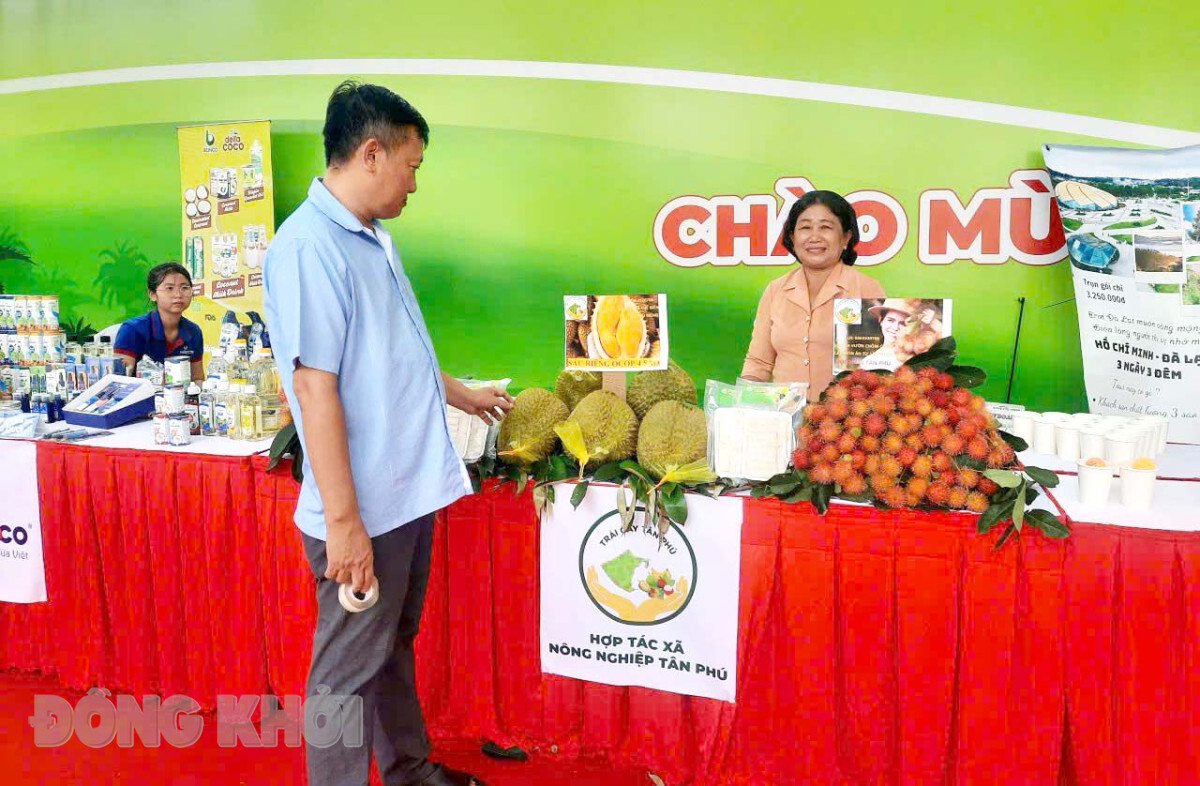
Tan Phu Agricultural Cooperative displays and introduces 4-star OCOP durian.
Durian prices fall
In 2024, Vietnamese durian will be exported strongly to China. In the province, there was a time when farmers sold it at 150,000 VND/kg in the garden. At the same time, small traders who make a living selling fruit at Ben Tre market and on major roads no longer have durian to retail to passersby. This year, durian is sold in abundance at fruit warehouses and stalls, at a price of only 50,000 VND/kg. With 100,000 - 150,000 VND, local people can buy a 3kg durian. Some durian traders said that most of the durian sold in the province is sourced from many places, not just from gardens in the province.
China is a market that accounts for more than 90% of Vietnam's durian export turnover and has strengthened control of food safety factors such as: yellow O residue, Cadmium... When many shipments were delayed or returned; some export contracts were signed in advance but the implementation was delayed or left unfinished... are the main reasons why durian prices have dropped sharply this year, forcing traders to consume large quantities domestically and locally.
On May 8, 2025, Minister of Agriculture and Environment Do Duc Duy chaired a meeting on the current status of management of growing area codes, traceability and solutions to enhance durian export activities.
According to the report, in the first months of 2025, durian exports to China recorded a serious decline, reaching only about 20% of the plan. The consequences not only affected the overall target of the whole industry, but also pulled down the domestic durian price, only a quarter of the export price. The reasons were pointed out as: lack of legal basis and clear quarantine process; State management of food quality and safety is still slow. The granting of growing area codes, approval of packaging facilities and testing room systems have not yet caught up with the strict requirements of Chinese customers, which is a large consumer market but also full of risks if not carefully prepared.
In this situation, the Ministry of Agriculture and Environment said it will closely coordinate with the Chinese Customs to handle technical issues that are significantly hindering export flows. At the same time, it will speed up the process of granting growing area codes, approving packaging facilities and laboratories for export.
Adaptive garden house
In the context of China suddenly tightening standards, the purchasing of durian for export in the province has slowed down. However, traders and businesses still maintain purchasing, creating relative stability in production and consumption.
Mr. Nguyen Van Ut Tam, a member of Tan Phu Agricultural Cooperative (Chau Thanh district), shared that compared to 2024, the price of durian in the province has decreased significantly. The average price this year is only about 40,000 VND/kg, 10-15,000 VND/kg lower than last year. However, if you know how to take care of it properly, gardeners can still sell it for 40-50,000 VND/kg. With this price, farmers consider it stable and still profitable.
Regarding the productivity and quality of fruits, the gardens in the province are considered quite good. This year's output is quite good, the quality has also improved. Some gardens with higher quality can sell at higher prices, about 40 - 50 thousand VND/kg.
Ms. Nguyen Thi Thinh - Director of Tan Phu Agricultural Cooperative shared: “The product consumption situation is facing many difficulties. In 2024, there was a time when the price was higher than 100,000 VND/kg of product. But recently it is only about 50,000 VND, some gardeners even sell it lower at less than 30,000 VND/kg because the product does not meet the quality and appearance standards, and the fruit blight disease…”.
According to the Department of Agriculture and Environment, the province's durian area is more than 3,000 hectares, mainly concentrated in Cho Lach, Chau Thanh and Mo Cay Bac. Of which, 2,113 hectares are in the fruiting period, with an output of over 26,000 tons/year. Compared to many provinces such as Dak Lak, Dong Nai or Tien Giang, the province is not outstanding in terms of area size, but has strengths in flexible production organization and focusing on production according to quality standards. The whole province has many areas that have been granted growing area codes, applying VietGAP processes, and having packaging facilities recognized by China.
According to Ms. Nguyen Thi Thinh, Tan Phu Agricultural Cooperative has a total area of 230 hectares; of which 1 growing area code is granted. Implementing production standards, farmers are instructed to fully record all farming activities, from care to harvest, to ensure transparency and traceability of products. In addition, the Cooperative has also accessed support projects to help farmers apply digital transformation to farming such as automatic irrigation systems, positioning applications and farming monitoring via phone.
Currently, the Cooperative's durian products have been certified as 4-star OCOP products, initially affirming the quality and building trust for the domestic and export markets. In the future, Tan Phu Agricultural Cooperative will build a 5-star OCOP durian brand to serve the domestic and export markets.
| The durian situation in 2025 is assessed to be a good season, which may not bring about the price expectations as last year, but for the province, this is a year marking perseverance and adaptation to climate change and the market. Stories from the practice of cooperative gardeners are bright spots suggesting a model for organizing agricultural production in a period of tumultuous integration. If we know how to take advantage of opportunities, improve quality, diversify markets and invest appropriately, durian in the province can completely affirm its sustainable brand, not only domestically but also in the international market. |
Article and photos: Cam Truc
Source: https://baodongkhoi.vn/nang-cao-chat-luong-mo-rong-thi-truong-tieu-thu-sau-rieng-12052025-a146499.html


![[Photo] 60th Anniversary of the Founding of the Vietnam Association of Photographic Artists](/_next/image?url=https%3A%2F%2Fvphoto.vietnam.vn%2Fthumb%2F1200x675%2Fvietnam%2Fresource%2FIMAGE%2F2025%2F12%2F05%2F1764935864512_a1-bnd-0841-9740-jpg.webp&w=3840&q=75)
![[Photo] Cat Ba - Green island paradise](/_next/image?url=https%3A%2F%2Fvphoto.vietnam.vn%2Fthumb%2F1200x675%2Fvietnam%2Fresource%2FIMAGE%2F2025%2F12%2F04%2F1764821844074_ndo_br_1-dcbthienduongxanh638-jpg.webp&w=3840&q=75)






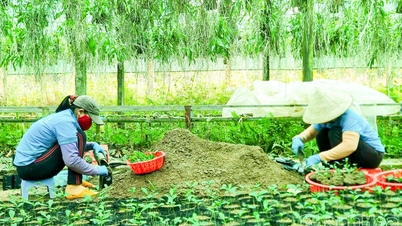

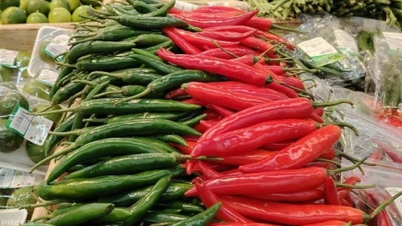

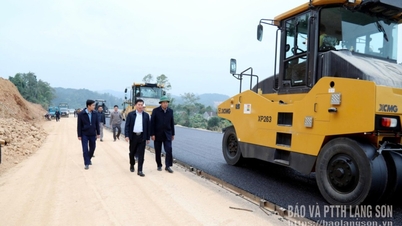









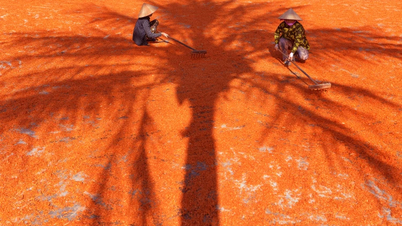
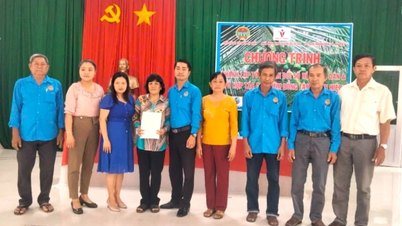
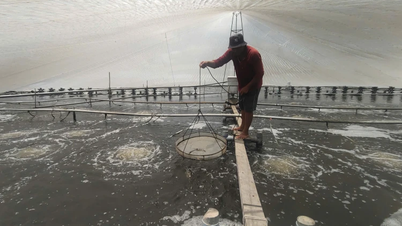
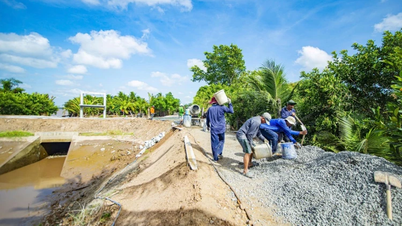






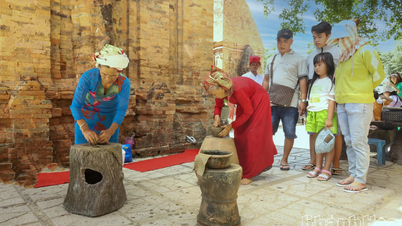


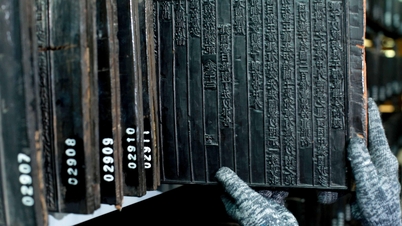















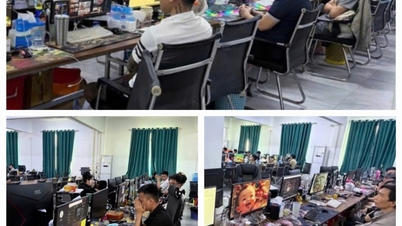



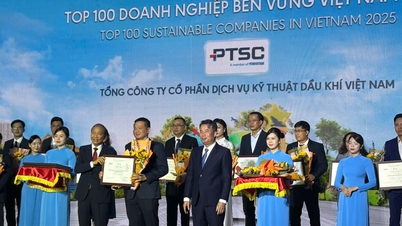















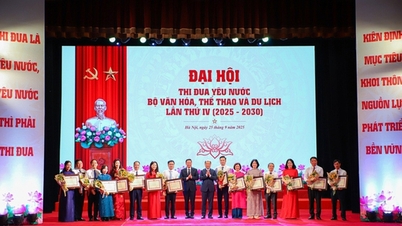




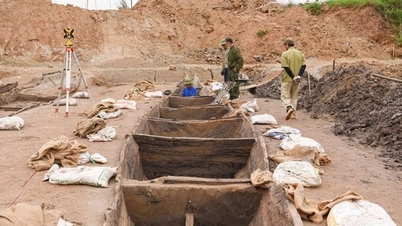

















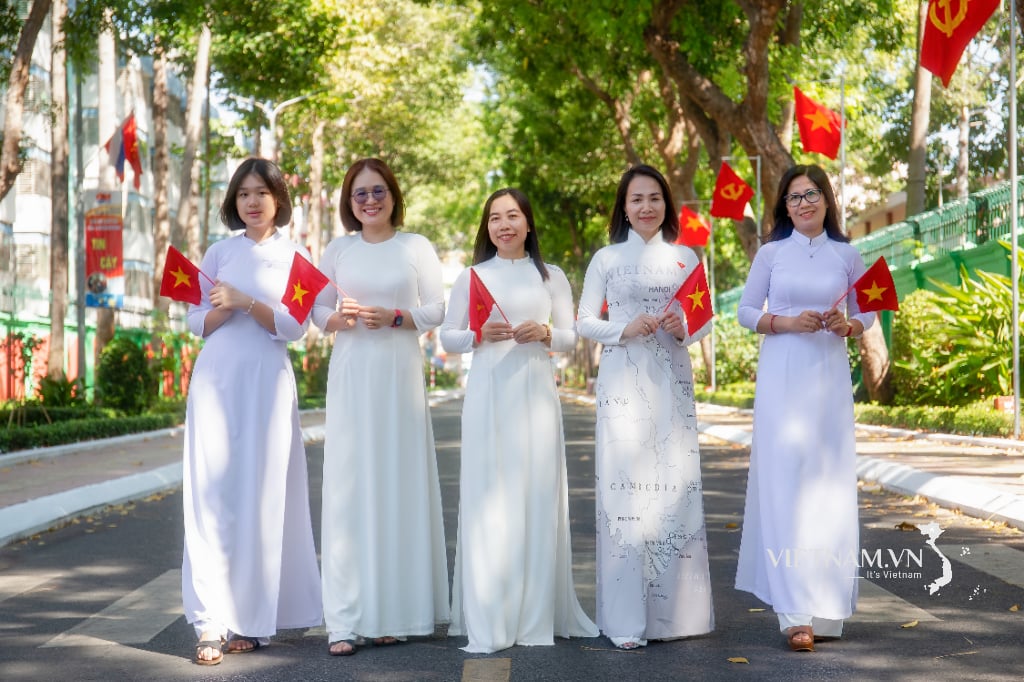
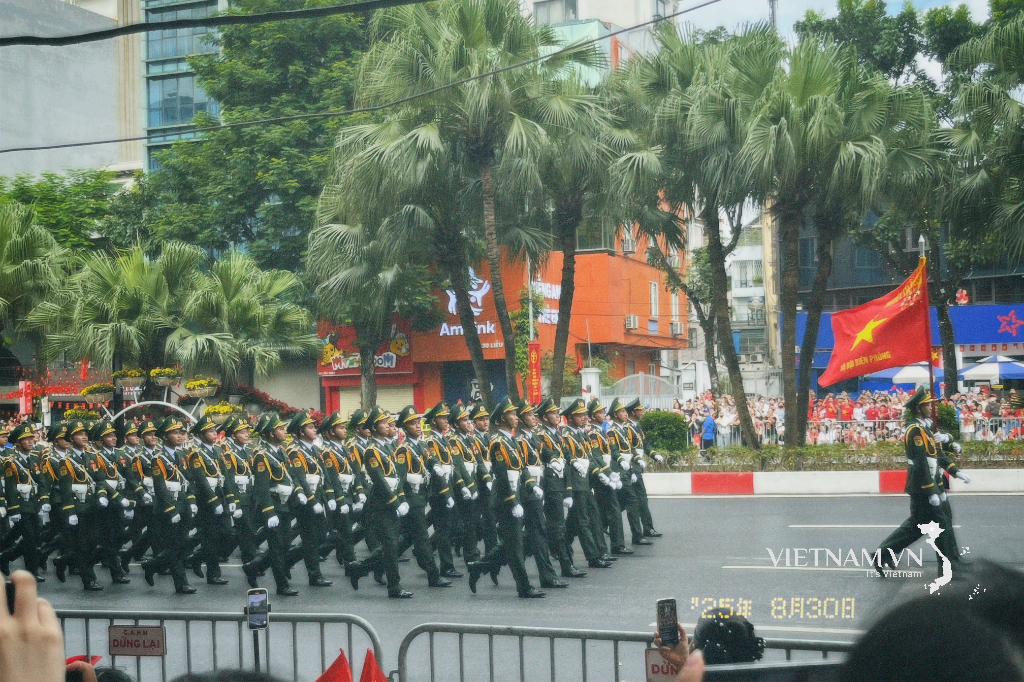






Comment (0)